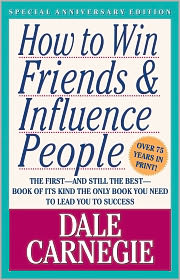
Here is our latest update on the stock trading technique called 'Buying Dividends'. This is the process of buying stocks before the
ex dividend date and selling the stock shortly after the ex date at about the same price, yet still being entitled to the
dividend. This technique generally works only in bull markets. In flat or choppy markets, you have to be extremely careful.
In order to be entitled to the dividend, you have to buy the stock before the ex-dividend date, and you can't sell the stock until after the ex date. The actual dividend may not be paid for another few weeks. WallStreetNewsNetwork.com has compiled a
downloadable and sortable list of the stocks going ex dividend during the next week or two. The list contains many dividend paying companies, all with market caps over $500 million, and yields over 2%. Here are a few examples showing the stock symbol, the market capitalization, the ex-dividend date and the yield.
H&R Real Estate Investment Trust (HRUFF) market cap: $2.8B ex div date: 9/12/2011 yield: 4.7%
Public Storage (PSA) market cap: $19.4B ex div date: 9/12/2011 yield: 3.3%
GATX Corporation (GMT) market cap: $1.4B ex div date: 9/13/2011 yield: 3.8%
Garmin Ltd. (GRMN) market cap: $6.0B ex div date: 9/13/2011 yield: 5.2%
H&R Block, Inc. (HRB) market cap: $4.1B ex div date: 9/13/2011 yield: 4.5%
Leggett & Platt, Inc. (LEG) market cap: $2.7B ex div date: 9/13/2011 yield: 5.8%
Merck & Co., Inc. (MRK) market cap: $96.3B ex div date: 9/13/2011 yield: 4.9%
Rogers Communications Inc. (RCI) market cap: $16.0B ex div date: 9/13/2011 yield: 3.9%
Shaw Communications Inc. (SJR) market cap: $8.8B ex div date: 9/13/2011 yield: 4.3%
Huntsman Corporation (HUN) market cap: $2.8B ex div date: 9/13/2011 yield: 3.4%
Mercury General Corporation (MCY) market cap: $2.0B ex div date: 9/14/2011 yield: 6.6%
DTE Energy Company (DTE) market cap: $8.0B ex div date: 9/15/2011 yield: 5.0%
Dr Pepper Snapple Group Inc. (DPS) market cap: $7.8B ex div date: 9/15/2011 yield: 3.6%
The additional
ex-dividend stocks can be found at wsnn.com. (If you have been to the website before, and the latest link doesn't show up, you may have to empty your cache.) If you like dividend stocks, you should check out the high yield utility stocks and the Monthly Dividend Stocks at
WallStreetNewsNetwork.com or WSNN.com.
Dividend definitions:
Declaration date: the day that the company declares that there is going to be an upcoming dividend.
Ex-dividend date: the day on which if you buy the stock, you would not be entitled to that particular dividend; or the first day on which a shareholder can sell the shares and still be entitled to the dividend.
Record date: the day when you must be on the company's books as a shareholder to receive the dividend. The ex-dividend date is normally set for stocks two business days before the record date.
Payment date: the day on which the dividend payment is actually made, which can be as long at two months after the ex date.
Don't forget to reconfirm the ex-dividend date with the company before implementing this technique.
Disclosure: Author did not own any of the above at the time the article was written. By
Stockerblog.com















